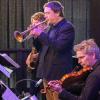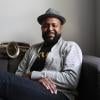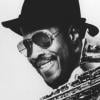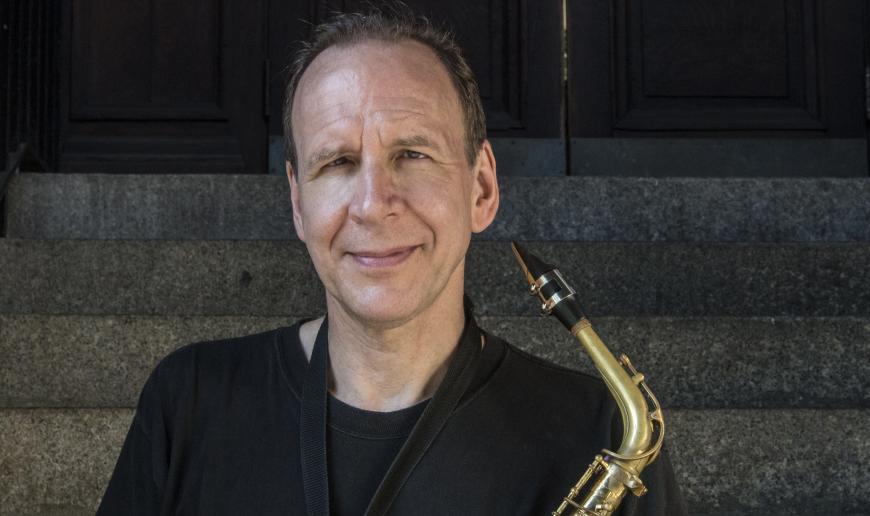
Out of both necessity and inclination, Mark Lewis has built and sustained a career in jazz by swimming against the current. An intensely lyrical alto saxophonist with a light, silvery tone and an accomplished flutist, Lewis has no interest in contemporary jazz’s preoccupation with intricate arrangements, densely notated scores, and asymmetric, rapidly shifting time signatures.
For one thing, he’s legally blind, and bringing reams of sheet music on the bandstand isn’t really an option. But Lewis’s music is designed to seduce audiences rather than dazzle them. He wants to leave an indelible impression with sinuous melodies that linger in the ear long after the show is over.
“I’m trying to be the Beatles but in my own way,” said Lewis, 66, from the home where he grew up in Bremerton, Washington. “I want people to say, ‘I love this music because I hear that it’s different and stretches the imagination a little bit.’”
Lewis returns to the Bay Area this month for a series of gigs, playing San Francisco’s Black Cat on April 24, Oakland’s The Sound Room on April 26, and the San Francisco house-concert series Chez Hanny on April 28. He’s joined by a top-shelf Bay Area rhythm section: pianist Adam Shulman, bassist Peter Barshay, and drummer Jon Arkin.
Bay Area jazz fans of a certain age might remember Lewis from the early 1980s, when he landed in San Francisco for about a year amid a long residency in Europe. He worked regularly at Enrico’s in North Beach, where he had a steady flow of memorable encounters, like a night of carousing with trumpet star Maynard Ferguson, “walking around the streets with a trumpet and a saxophone and a bottle, having so much fun,” Lewis recalled.
“Maynard asked me to be in his band, and I explained how I couldn’t see and that he’d need to blow up all the sheet music really big. He said, ‘You can just solo,’ but I didn’t think that would go over well with the band. He thought about it for a minute and agreed.”
Something of a cult figure, Lewis has gained a coterie of high-profile fans beyond high-note trumpet specialists, like jazz historian, cultural critic, and Substack star Ted Gioia, who has hailed “Lewis’s musicality, his inventiveness, his humor, his ability to immerse himself in the soundscape of the performance with total emotional commitment.”
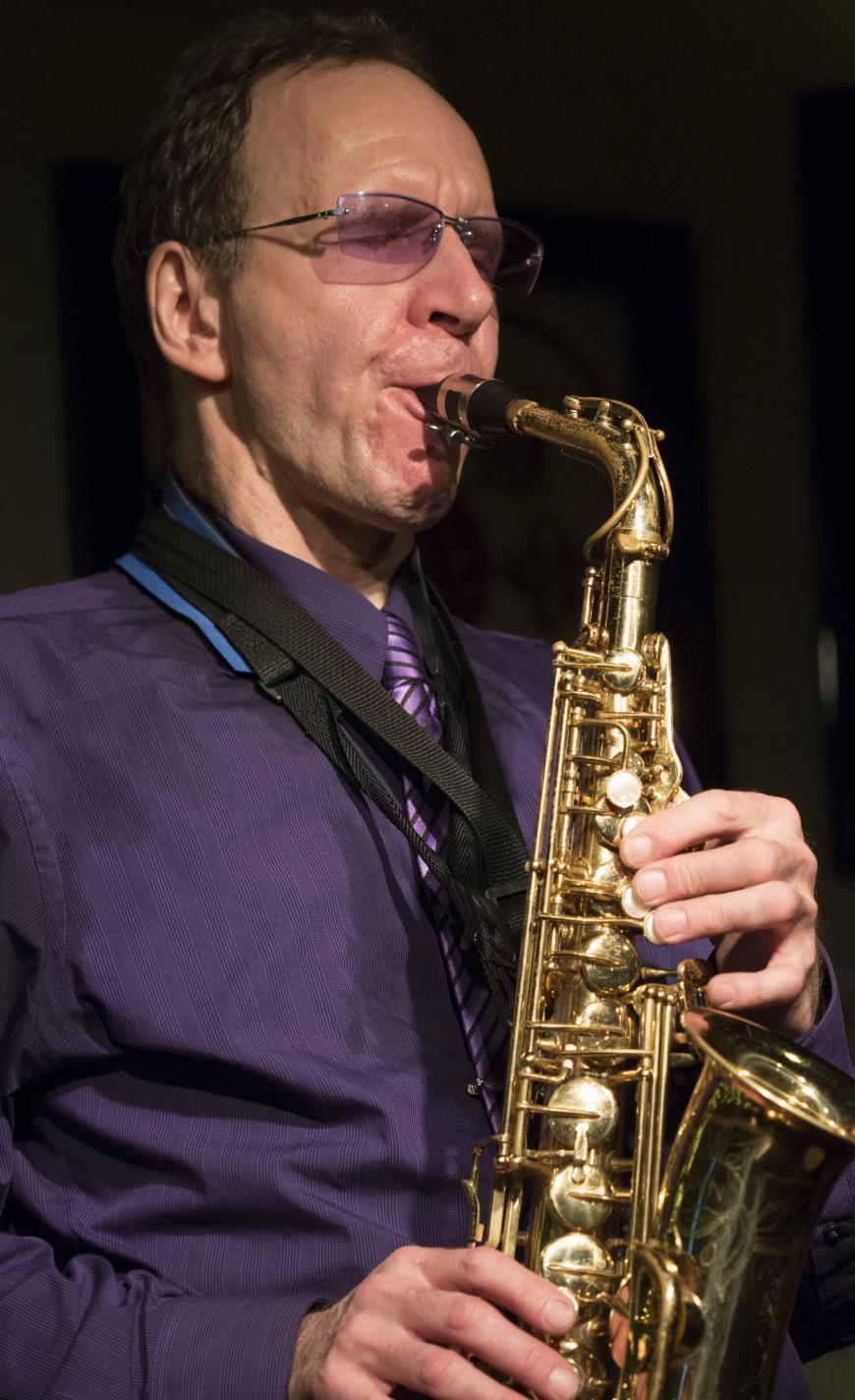
An enthusiastic conversationalist, Lewis can introduce five interesting ideas before an interviewer has the chance to slow him down. In discussing The New York Session, the album that reintroduced him to U.S. audiences in 2017 (on his Audio Daddio label), he explained why he’d focused on some of his simpler material. He didn’t share much bandstand history with his collaborators on the album — piano legend George Cables, veteran bassist Essiet Essiet, and the supremely swinging drummer Victor Lewis — which shaped the saxophonist’s choice of tunes. Another factor was his limited eyesight. He wanted to make sure that everyone was on the same creative page.
“I don’t see well enough to see facial expressions,” Lewis said. “I used simple compositions because I didn’t want to clutter the purity of the sound we were trying to get.”
Berkeley bassist Barshay, a well-traveled veteran whose resume includes stints with jazz giants like Kenny Barron, Freddie Hubbard, Sonny Stitt, Shirley Horn, Woody Shaw, Art Lande, and Paul McCandless, describes playing with Lewis as a singular experience. “He’s very surprising. I’ve worked with blind players, and it’s always something different. There’s a whole other sensibility about cueing,” Barshay said, referring to the visual signals that pass between musicians onstage to indicate a transition.
“Mark makes you feel comfortable, and that’s a huge thing. And his tunes are cool. He likes to mix it up with other kinds of feels, not playing everything four on the floor. And he likes to play percussion, banging on whatever’s at hand.”
Given his handicap, Lewis’s career path is all the more impressive, though he got off to a good start by absorbing music from both sides of his family. His paternal grandmother was a concert pianist, and his maternal grandfather played saxophone (a C melody horn that Lewis started playing at age 9). And he had free run of the family hi-fi system, soaking up the Count Basie, Duke Ellington, and Art Tatum records in his parents’ collection.
A standout player in middle school, Lewis formed his first band at 14 to perform at local dances and sports events. By high school his waking hours were filled with music as he played lead alto in the stage band, clarinet in the concert band, sang in concert and jazz choirs, and performed music for school plays. He went on to study composition, flute, electronic music, and piano at Western Washington University and the Cornish Institute of Allied Arts, supporting himself by leading several bands around the region.
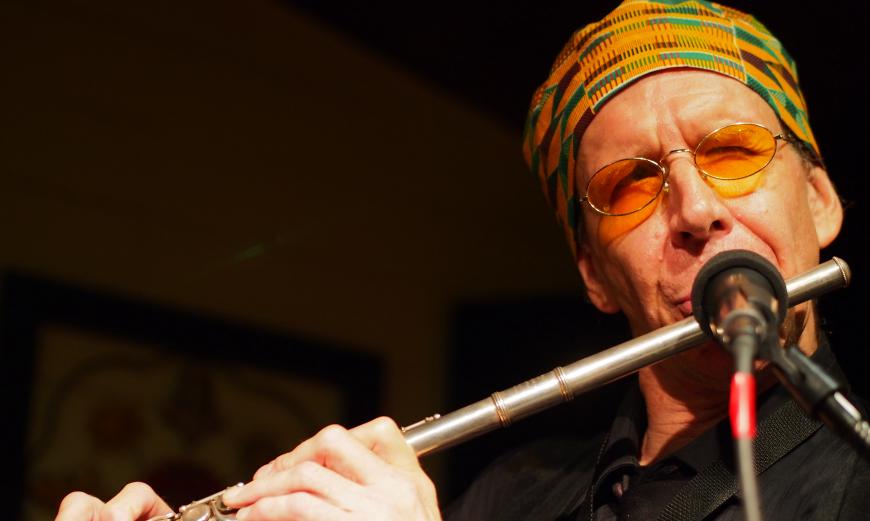
Settling in Seattle, Lewis quickly found invaluable colleagues and mentors among resident masters like Art Foxall, Bea Smith, Dee Daniels, and Buddy Catlett. Drum master Otis “Candy” Finch, who moved to Seattle after a sterling New York career recording with heavyweights like Blue Mitchell, Herbie Hancock, and Dizzy Gillespie, recognized Lewis’s budding talent and took him under his wing. He also encouraged him to get out of town, and in 1978 the 20-year-old saxophonist flew to Europe on a one-way ticket with his alto sax, $500 in his pocket, and virtually no contacts.
Lewis ended up making Rotterdam his home base for the next 14 years and established himself as a vital force on the international jazz scene as a player, label owner, and producer. While living in the Netherlands, he launched the Audio Daddio label, which documented leading European players like bassist Hein van de Geyn and expat and touring American jazz greats like drummer Philly Joe Jones and tenor saxophonist Clifford Jordan.
Lewis gigged relentlessly, performing widely with an organ trio featuring Carlo de Wijs on Hammond B-3; a world-jazz quintet featuring musicians from India, Holland, West Africa, and South America; and the experimental-minded quartet featured on his 2021 album Naked Animals (which was recorded in 1990).
“I only played original music, and I thought it was a good idea to play everywhere,” Lewis said. “Gigs helped promote the sales of albums. No one wanted to play in Sweden in the winter, the offseason. I didn’t mind. I’d play anywhere. I’m always happy when I come to a town when there’s no jazz. I’ll go and find a club and bring some music in.”
Wherever he toured, he’d bring a stack of records to sell, and when he arrived in the Bay Area, he made the rounds with LPs under his arm, garnering airplay for his releases on KJAZ. His first Bay Area band featured drummer Glenn Cronkhite, pianist Mark Little, and bassist Harley White (who was anchoring the trio of piano legend Earl “Fatha” Hines at the time). When Lewis couldn’t find gigs in clubs, “we played on the streets,” he recalled.
He’s found some cozy joints for this year’s Bay Area jaunt so probably won’t be availing himself of any street corners. Wherever and whenever Lewis performs, he’s committed to connecting with his listeners.
“Every moment that you play, look at yourself and do your best. Try to be your most earnest,” he said. “What I write comes from a pure heart and a pure soul. I’m reverent about music.”


